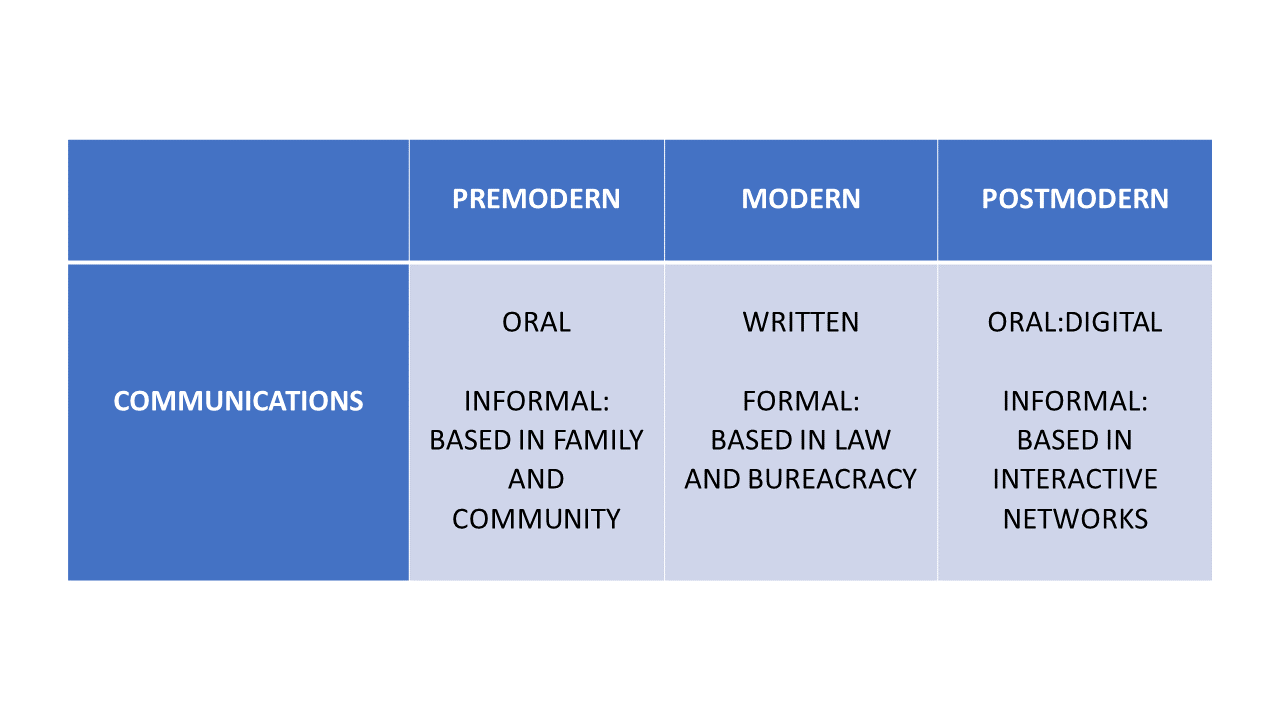
Communication
Oral forms of communication were dominant in the premodern world. Small, simple organizations allowed men and women to freely communicate face-to-face with one another. A strong sense of community and homogeneity of interests and values minimized the need for written documentation. With the emergence of industrialized and highly specialized modern organizations, there came an increasing need for written communication (contracts, letters of agreement, recordings of transactions and so forth) as a substitute for direct interpersonal contact. Rather than seeing and listening to another person, one reads her memorandum or written proposal. Other visual modes of communication also prevailed: television, film, graphics, and icon-based computer programs.
The postmodern world tends to be orally based—and in this sense more closely resembles the premodern than the modern world. In the postmodern organization we call each other and leave voice messages, rather than writing letters. We eliminate our secretaries and clerks, and seek to reduce paperwork. The Internet provides an opportunity for information and spontaneous communication to take place that seems more like extended conversation than a formal office memo. As computers are made available with even greater capacity and speed, we are likely to find that the written e-mail is replaced with the visual e-mail, making this mode of communication seem even more like face-to-face conversation.
In the postmodern era, short-term, face to face meetings, ad-hocracy, task forces and temporary systems have replaced long-standing bureaucratic structures that were dependent on written rules and the documentation of policies, procedures and program ideas. In this orally based world, gossip and story telling take on new relevance and appreciation, as does the interplay between communications and relationships. Words intermingle with nonverbal expressions of concern or happiness. People learn how to quickly bond together in temporary groups and then just as quickly disengage so that they can move on to different groups and different projects.









